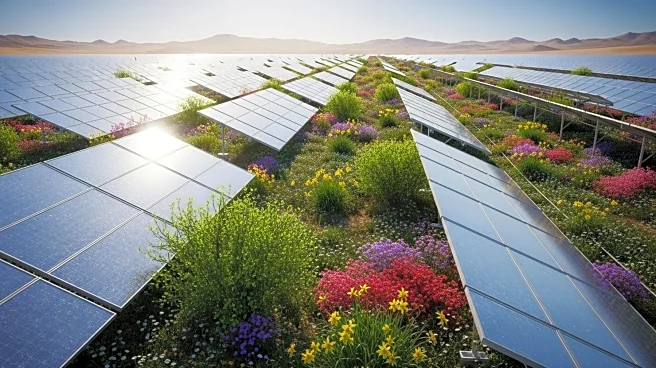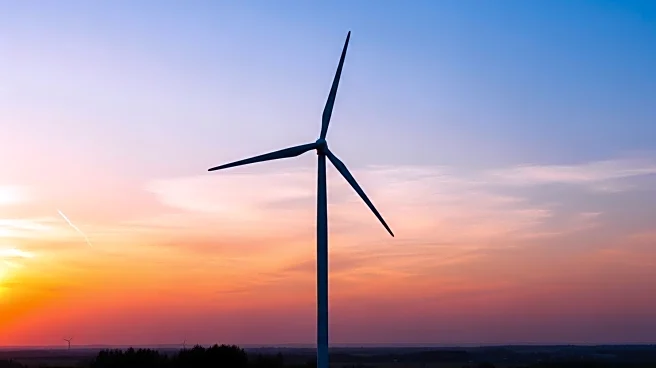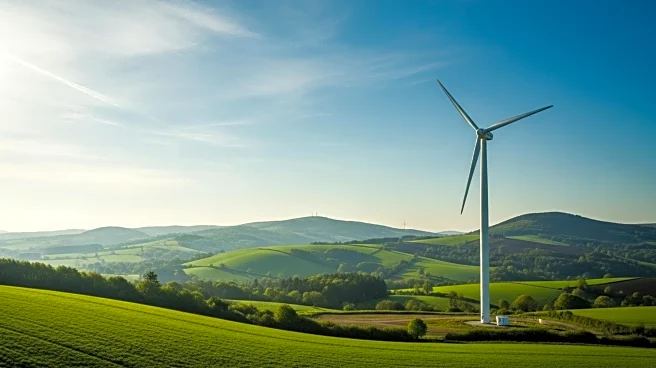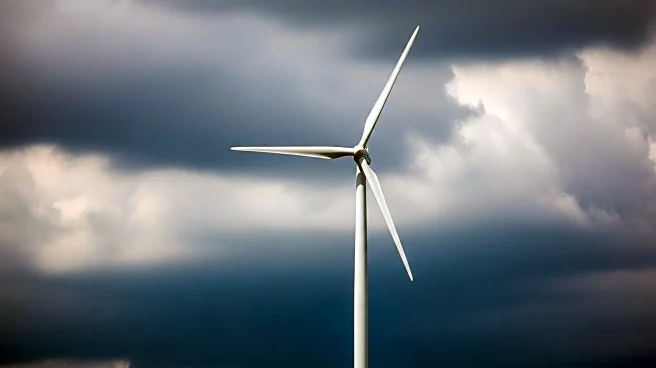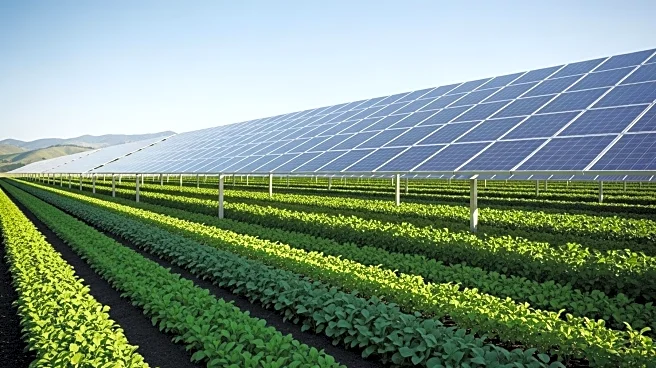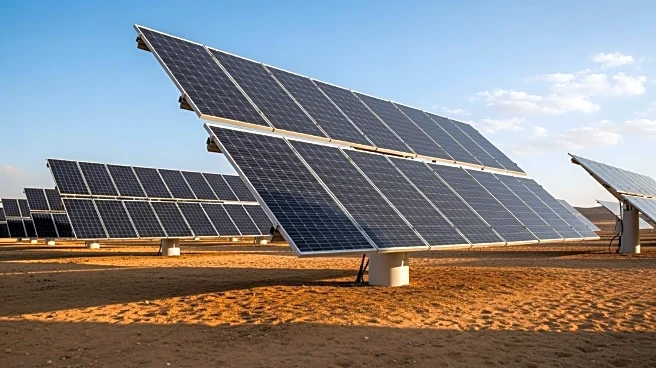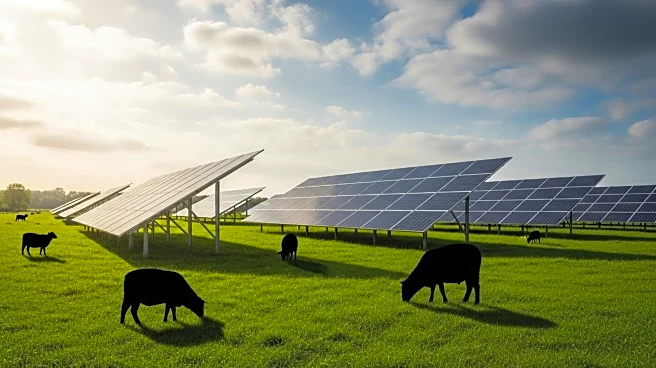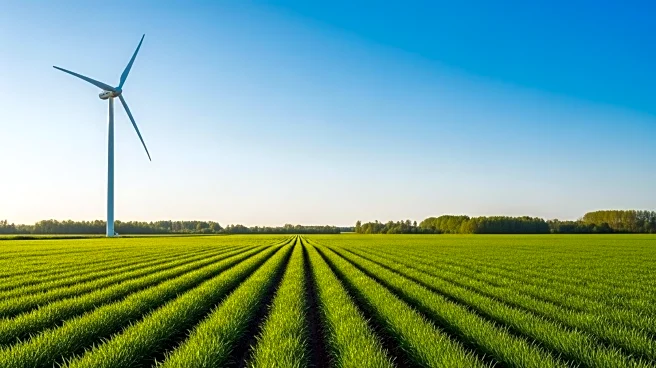What is the story about?
What's Happening?
Recent research conducted by Chinese scientists has revealed that solar panels installed in desert areas can lead to significant ecological changes. The study focused on the Gonghe Photovoltaic Park in Qinghai Province, one of China's largest renewable energy sites. Researchers found that the presence of solar panels in the Talatan Desert has contributed to an ecological revival, with improved soil indicators and increased biodiversity. The panels provide shade, reducing surface radiation and evaporation, which helps retain moisture and cool the soil. This creates favorable conditions for vegetation and microbial communities to thrive. The study utilized the DPSIR framework to track various factors such as humidity, temperature, soil nutrients, and local flora, demonstrating that areas directly beneath the solar arrays scored higher on ecological indices compared to transitional and off-site desert zones.
Why It's Important?
The findings from this study highlight the potential for solar farms to serve dual purposes: generating clean energy and aiding in environmental restoration. This could transform the way solar energy projects are perceived, especially in desert regions often considered biological dead zones. By creating microclimates that support life, solar panels could play a crucial role in combating desertification and promoting biodiversity. This approach aligns with global efforts to decarbonize and restore ecological balance, offering a promising avenue for sustainable development. The implications extend beyond China, suggesting that similar strategies could be employed in other desert regions worldwide, including the American Southwest.
What's Next?
While the initial results are promising, the researchers emphasize the need for long-term monitoring to fully understand the impact of solar panels on desert ecosystems. Water cycles and biodiversity can shift over time, and what works in Qinghai may not be directly applicable to other desert environments. Future studies will need to consider local design and site selection to optimize the ecological benefits of solar farms. Additionally, China is exploring agrivoltaic systems, where shade from panels is used to grow crops like goji berries, further stabilizing soils and reducing evaporation.
Beyond the Headlines
This research challenges the traditional view of deserts as barren landscapes, suggesting that with careful management, solar farms can become hubs of ecological restoration. The concept of 'Photovoltaic Plus' systems, which integrate energy production with environmental stewardship, could redefine the role of renewable energy in sustainable development. As countries worldwide seek solutions to climate change and environmental degradation, the integration of solar energy with ecological restoration offers a compelling model for future projects.
AI Generated Content
Do you find this article useful?
